Zoology - Blog Posts


This post took me some time. Here some nice posters with all the equines.
The first one has all of them, including species and subspecies. Because they are so many I felt that need it a more stiff design so is easy to understand the family and on the genus and subgenus that belong to the family. It is very complete, name, scientific name and also conservation status.
On the next poster, I just focus in showing the species and named the subspecies. Because they were less to show, gave me some room to play with the design and sizes so the illustrations can be appreciated better.
The last poster is for the zebras. I felt that such an iconic animal deserves a poster. All then subspecies with the scientific names and the conservation status.
If you want to have this nice posters hanging in your wall, just follow the link below. They come in different sizes, prices and mediums. It will help me a lot as well if you throw me a like or reblog any of my post. Thank you all for your support.
Posters: Here Follow my Instagram: Species of the World

Mountain Zebras
The last species of zebras and the last as well of the equidae family. This ones are very distinctive because of the skin that hangs below their neck. They inhabit in very small spots of the south of Africa and are relatively safe regarding its conservation status.
At some point the Hartmann’s Mountain Zebra was believed to be a new species but genetic evidence disregard this thesis in 2005.
The next family is a very interesting one. With extravagant and varied shapes that are in many cases very impressive. A human companion since the beginning and probably as important as the horse in the evolution of the human kind. _________ If you like this content it will help me a lot if you follow my Tumblr or if you share the content. Also, every comment is very welcome. I am not an expert in the topic so if you have something to add, or something you thinks is incorrect, I will be more than happy to discuss it with you. Thank you! and don’t forget to check out my posters in my store in the link below. Posters: Here Follow my Instagram: Species of the World


Plain Zebras Plain zebras are composed by seven subspecies. It is a very iconic animal, recognizable by all and many times take it as granted, therefore we think, no action had to be taken. While some of the subspecies are not facing any significant risk of extinction, some others are, or sadly disappear already. Let’s see some of this equines in detail. Burchell’s Zebra Believed extinct at some point in history, it was later proved that the subspecies status is actually stable. It is now a very common subspecies that is legally farmed for human consumption. Very common to see in zoos and even a small population of 70 to 100 specimens survive in a ranch in California.
Quagga It is the only subspecies of zebra that is extinct. By the end of the 1800′s the animal was very popular in the zoo’s of Europe and by 1883 the last specimen died in a Zoo in Amsterdam. Zoos requested more animals, discovering that they were impossible to find, finally declaring the animal extinct by 1900. It was regarded as a common animal and so close to humans that domestication was believed possible. When extinction came, humans didn’t realize and it was far to late to do something. Spotted Zebras? Black Zebras? White Zebras? Indeed. Zebra’s patterns are unique in each individuals and sometimes some of them present really amazing and rare patterns. Probably one of the most famous nowadays are the baby zebra that was spotted recently with a very particular kind of stripes. Although incredible, this kind of pattern do not represent any other new subspecies. Have a look on the link below and be amazed again by nature. Strange Zebra Patterns If you like this content it will help me a lot if you follow my Tumblr or if you share it. Also, every comment is very welcome. I am not an expert in the topic so if you have something to add, or something you thinks is incorrect, I will be more than happy to discuss it with you. Thank you! Posters in my store: Here Follow my Instagram: Species of the World

Onager is the ass of Asia. However, the biggest difference from the African Wild Ass is that the Asian Ass could never be tamed. They are considerable bigger that its African cousins at about 290 kilos in weight. They are also among the fastest mammals on planet, being able to reach up to 70 Km/h.
The two species, (African and Asian Ass) shared the same ancestor: The Kiang, which will be described later, and which was considered a subspecies of the Onager. Nonetheless, further studies acknowledge as a distinct species.
Five subspecies are recognized. Two of them are close to extinction, other two are threatened and one, unfortunately, is extinct. There is the possibility of another subspecies, The Gobi Khulan but there is still debate on it.
Mongolian Wild Ass: It is the most widespread from all subspecies but has lost about %50 of its former distribution range in just 70 years. It’s main threat is poaching and competition for grassland with livestock.
Turkmenian Kulan: Also called Transcaspian Wild Ass or simply Kulan, the animal has slowly decline in former distribution ranges but its population has increase where it’s been re-introduced such as in Kazakhstan, Uzbekistan and Ukraine where they used to inhabit. Also in Israel where th subspecies is making hybrids with Persian wild Onagers.
Persian Onager: Also called the Persian Zebra or Gur, The Persian Onager has been close to extinction. It is highly protected and hunting it is strictly forbidden. Breeding programs in different zoos associations in Europe and North America are keeping hope on this animal. That various spring born in captivity has been returned to its natural environment. Some other new borns in Khar Turan National Park, in Iran (it’s native environment) has been reported.
Indian Wild Ass: Also called Ghudkhur, Khur or Indian Onager. Form barely 300 animals in 1960, strong seizures of protection and adding better resources to its environment such as water holes, by 2004 its population increased to almost 4000. The most recent census in 2015 stated that its population is close to 5000. When you want you can.
Syrian Wild Ass: Known also as Hemippe, Achdari or the Mesopotamian Onager, he couldn’t make it to today. Huge herds used to be seen in the 15th and 16th centuries but its number began to drop precipitously during the next centuries due to overhunting by Europeans. Its existence became uncertain during the World War I (Nothing god from wars) and its last specimen was fatally shot in 1927 near Azraq Oasis in Jordan. The last specimen died the same year, in Vienna.
I had a nice discussion a few day back about subspecies. My friend was arguing that subspecies is silly because some of the differences are just molecular, dental, and barely hard to see. Me, on the other hand, I think subspecies is the first step for a new species to come. The subspecies of one species are found in environments that usually has small variables in between but somehow force the animal to change in order to survive.
These adaptations are what make the animal a subspecies, small changes. However, we all know that the environment is not still and it will eventually change, probably a lot. And if the animal wants to survive that environment, it also has to change, a lot as well. To the point that it might become a new species. So I think subspecies is something very subtle but can be the beginning of a new animal. Interesting isn’t it? Anyway, is just my thoughts from the little I know about the subject. If someone have another approach I’d love to hear it.
PD. My next family will be the camelidae, so if you know about this family or have good pictures of them, you are very welcome to help me with this investigation.
Nice Posters in my store: Here Follow my Instagram: Species of the World

Now it’s the time for the less glamorous horse’s cousins, the Ass. An animal that shockingly is doing way worst than horses in terms of conservation and yet this really have had to do the dirty job. While the horse is exhibit proudly as a man companion and sometimes an extension of human’s soul, the Ass, on the other hand is like the one that is better not to be shown and the one in charge of the hardest and dirtiest jobs. Incredibly this obvious disparagement is reflected as well in its quantity due that from the four subspecies that exist, one is extinct and the other two are close to suffer the same fate.
Nonetheless, ass as regarded as stupid animals and are usually portrayed as such, nonetheless is an animal that is close in intelligence to the horse, if not the same. Besides, they are excellent mothers and can defend their offspring furiously. An animal to keep an eye on, to care and value as another really important animal that was crucial in the evolution of humanity. More love for this misunderstood animals, please.
Nubian Wild Ass: Believed extinct in the wild, some estudies of DNA were done to a feral population living in the Caribbean island of Bonaire (Keep in mind that this animal is from Africa) The DNA results were positive as a nearly pure DNA of the believed extinct Actual Nubian Wild Ass. Although further studies need to be done, give a little of hope to the survival of this animal. Somali Wild Ass: The fate of this animal was saved by a project in the Zoo of Basel in Switzerland, that has been able to keep the captive animals in a robust number.
Atlas Wild Ass: Extinct in 300 AD, this animal was used in the roman circus and hunting. It is estrange that many animals with the name “Atlas” on it, has been extinct as we will see further.
Donkey: A new friend to take care of and be grateful.
PD. My next family will be the camelidae, so if you know about this family or have good pictures of them, you are very welcome to help me with this investigation. Thanks! Also, happy new year, more posters in my store: Here Follow my Instagram: Species of the World

Przewalski's Horse:
The Przewalski Horse is the only truly wild horse that remains. Extinct at some point for more than 30 years, it was the zoos who actually brought them back. By 1940′s its number began to decline rapidly and by 1969 after a fruitless search, only one individual was spotted in the wild. Only a handful of this animals were surviving in some of the zoos of Europe.
A breeding program began in the Netherlands by 1977. By 1979 the program was able to maximize the genetic diversity from the almost 400 individuals spread in 16th different facilities. By early 1900s, the number of horses increased by over 1500. The horse is now reintroduced to its natural habitat and today it’s numbers remain stable.
Zoos are controversial but I personally think they are crucial at the conservation of the species (I’m talking about zoos that are actually working on precede the life of many species, not the ones that are created just for our own selfish enjoyment). There is of course room for improvement but a zoo is not what it used to be 40 years ago. There is a better understanding of the behavior of the animals today and this allow us to make better enclosures that are a more friendly space for the animals inside.
On the other hand, we are making the world an uncertain place. Many of the habitats are being vanished from earth and many species have seen their numbers drastically reduced because of this. Maybe the zoos are the new futuristic Noah’s Arc. A place for recovery, where endanger animals can survive in this uncertain times. Then, we can have more time to learn how to live on earth without destroying it and put them back where they belong once everything is safe again.
If is not for zoos, the Przewalski Horse would have vanished from earth many years ago.
PD. I change a little the layout. What do you think?
Follow my Instagram: Species of the World My store: Red Bubble store

Tarpan: Many reasons collided that resulted in the extinction of this wild horse. It was an important source of meat for many cultures and while humans were flourishing in the Eurasian continent, the Tarpan’s populations began to decrease. The Tarpan horses also were persecuted because of the damage they caused to hay storages. Breeding domestic horses with Tarpans also was a problem because the offspring were impossible to tame. Tarpans survived the longest in the southern parts of the Russian Steppe. By 1880 most Tarpans were hybrids, and pure breeds became extremely rare. In 1879 the last scientifically confirmed Tarpan in the wild was killed accidentally while being capture. The last captive Tarpan died in 1909 in a Russian zoo.

Domestic Horse Countless of breeds of domestic horses that are divided in three categories: the Hot Blood, the Cold Blood and the Warm Blood. The horse has been crucial in to the evolution of the humans. It was one of the first animals domesticated and thanks to them we hav been able to conquer the world shorting distances, carrying or agriculture. We won’t be what we are now if is not because of the taming of the horse.
The three categories are divided like this: The Hot Blood of spirited horses are used for speed and its endurance. The Cold horse have the ponies and dwarf horses but also the biggest ones and are mostly used to heavy work and the warm blood which is a mixing of both is focusing in creating for specific riding purposes, mostly in Europe.
Follow my Instagram: Species of the World My store: Red Bubble store

Now is the turn of the Equidae Family. Not a huge fan of this family but I most say that it was very interesting to study them. Some of the members of this family are sadly extinct, while many others are on the brink of extinction. This animal has a beauty that is hard to express with words. I guess that is why appear in so many paintings through history.
Feral Horse: The feral horse is a free animal that was once domesticated. Somehow, escaped and become feral. The most famous ones might be the mustangs in North America. However the biggest population is found in Australia with more that 400.000 individuals. In Australia they are called Brumby. They can be found mostly everywhere and it’s name change depending on where is found and what type of breed used to be. Life always will find its way to survive.
I am moving to Instagram eventually: Species of the World My store: Red Bubble store

A poster with all the Tayassuidae species and subspecies along with the conservation status of each of them.
Follow my blog of all the Species I am moving to Instagram eventually: Species of the World
I am selling the poster of the Tapirus (Tapir) family along with the Rhinotermitidae (Rhinoceros). Soon I will put this poster on sale but I want to make some posters for some of the genus of this family.
Have a look following the link: Red Bubble store


White Lipped Peccary
This peccary has five different subspecies. Oddly, I could not find it’s common names. Just the latin ones. Very little information about each of them and more as a general information of the species.
The two main threats to their survival are deforestation and hunting. Natural predators include the jaguar and puma and of course, us. They can be very aggressive when cornered and maintain contact with the herd by making a low moaning sound.
The herds can be immense with up to two hundred individuals, which can be beneficial to avoid attacks from predators, specially the jaguar.
Tayassu pecari pecari: Can be found in Colombia (west), Venezuela, Guayanas y Brasil (north of the Amazon river).
Tayassu pecari aequatore: Colombia (south east) and Ecuador.
Tayassu pecari albirostre: Brasil (South of the Amazon), Peru, Bolivia, Paraguay and north of Argentina.
Tayassu pecari spiradens: From the north of Colombia to Costa Rica.
Tayassu pecari ringens: From Nicaragua to the south of México.
I am moving to Instagram eventually: Species of the World My store: Red Bubble store

Giant Peccary
is a possible fourth species of peccary, discovered in Brazil in 2003. It was formally described in 2007, but the evidence of its status is been questioned for that reason its evaluation in 2008 was resulted in Data Deficient. In 2011 this species was moved to the Collared Peccary but still some believe it might be another species and further studies have to be done to prove it.
I am moving to Instagram eventually: Species of the World My store: Red Bubble store

Chacoan Peccary, Tagua
Due to inhabit in an isolated region of South America, it is very vulnerable to human activity. As soon as is discovered in an area, it disappears. Herds are decreasing rapidly due to habitat loss, fragmentation and hunting. The area where this animal lives is being transformed into ranches, disseminating the species. In order to save the species, a population has been established in North America and some Europeans zoos. Paraguay is also establishing laws to protect it, but they are not highly enforced.
I am moving to Instagram eventually: Species of the World My store: Red Bubble store

Now it’s the turn for the Tayassuidae family, better known as the Peccaries. Closer relatives of the Suidae family (pig) they still belong to a different family. Probably the biggest difference is that all this family inhabit the new continent: America. Let’s begin...
Collared peccary, javelina, saíno, báquiro, musk hog, quenk Collared peccaries are diurnal animals that can live in groups up to 50 individuals. However is ben proved that some animals living in the central Arizona are nocturnal. Usually ignore humans, can attack if feels threatened. As an alarm, can give a sharp bark.
Follow my blog about Species, here. I am moving to Instagram eventually: Species of the World Have a look following the link: Red Bubble store

A poster with all the Phacochoerus subspecies and the conservation status of each of them.
Follow my blog about Species, here. I am moving to Instagram eventually: Species of the World
I am selling the poster of the Tapirus family along with the Rhinotermitidae. Soon I will put this poster on sale but I want to make some posters for some of the genus of this family.
Have a look following the link: Red Bubble store

Did Megalodons Brush Their Teeth In The Morning?
Almost everyone has heard about the Megaladon aka Carcharodon Megalodon - the terryfying, hair-raising sea creature that used to reign the waters about 10 million years ago. It’s a really huge scary shark basically.
And it is no secret that the species never suffered from tooth decay or plaques. Mostly this has been thought to be due to the regular changing of teeth. However, recently scientists have discovered that the sharks actually used toothpaste!
Well, not exactly. As it turns out, Megaladons had an interesting teeth mineral composition. Their teeth were packed were with fluoride, which is what we use in toothpaste nowadays. Fluoride made their teeth extremely strong and resistant to bacteria. And it wasn’t only Megaladons - most of the predator dinosaurs and several other species of sharks had a similar tooth meniralisation.
However, nowadays predators and other mammals do not boast a full set of shiny, fluoride-filled teeth. Humans themselves walk around with agonising pain in their teeth meanwhile the dentists are rolling in money. Why would evolution do such a thing? Having fluoride in your teeth seems like an awesome advantage, right?
Scientists aren’t really sure why the presence of fluoride was eliminated during the hostile course of evolution. The best guess is that the concentration of fluoride in water has decreased over the years and it wasn’t enough to support the teeth-changing cycles or organisms.
It may also be due to the fact that fluoride can be harmful. If fluoride encounters sour fruits or meat that isn’t fresh, hydrofluoric acid is formed. The acid is very corrosive, it can even dissolve glass. Who would want to have this in their mouths?
Source: http://www.paleonews.ru/index.php/new/588-fluoridtooth
...How in the fu-
how does that-
not a single bit of that viewpoint makes sense. like. the frick. how? how would one come to the conclusion that preserving habitat of species is unnecessary for preservation of that species?!?
I think this is it? H.R.1897 - ESA Amendments Act of 2025. https://www.congress.gov/bill/119th-congress/house-bill/1897/text
...Though there's another potentially-sketchy bill, one that says the ESA should only apply to species that are native to the United States. (And if a species has extant populations in / migrates to a different country, what then?)
H.R.102 - American Sovereignty and Species Protection Act of 2025 https://www.congress.gov/bill/119th-congress/house-bill/102/text.
...actually this one is rather short, so:
----------------------------
To amend the Endangered Species Act of 1973 to prevent a species that is not native to the United States from being listed as an endangered species or a threatened species, to prohibit certain types of financial assistance, and for other purposes.
IN THE HOUSE OF REPRESENTATIVES
January 3, 2025
Mr. Biggs of Arizona introduced the following bill; which was referred to the Committee on Natural Resources
A BILL
To amend the Endangered Species Act of 1973 to prevent a species that is not native to the United States from being listed as an endangered species or a threatened species, to prohibit certain types of financial assistance, and for other purposes.
Be it enacted by the Senate and House of Representatives of the United States of America in Congress assembled,
SECTION 1. Short title.
This Act may be cited as the “American Sovereignty and Species Protection Act of 2025”.
SEC. 2. Limitation on listing of nonnative species and provision of certain financial assistance.
(a) Limitation on listing of nonnative species.—Section 4(a) of the Endangered Species Act of 1973 (16 U.S.C. 1533(a)) is amended by adding at the end the following:
“(4) NONNATIVE SPECIES.—The Secretary may not determine that a species is an endangered species or a threatened species pursuant to this section if such species is not native to the United States.”.
(b) Limitation on provision of certain financial assistance.—Section 8(a) of the Endangered Species Act of 1973 (16 U.S.C. 1537(a)) is amended—
(1) by striking “As a demonstration of” and inserting the following:
“(1) IN GENERAL.—As a demonstration of”;
(2) by striking “(which includes, but is not limited to, the acquisition, by lease or otherwise, of lands, waters, or interests therein)”; and
(3) by adding at the end the following:
“(2) PROHIBITION ON PURCHASING LAND IN A FOREIGN COUNTRY.—No financial assistance provided under paragraph (1) may be used to acquire, by lease or otherwise, lands, waters, or other interests in a foreign country.”.
On April 16th 2025 the US federal government has proposed to change the interpretation of the endangered species act so that it no longer protects habitat.
This is open for public comment until the end of May 19th. Please comment and make your voice heard.
Wildlife need their habitat. If the ESA redefines harm so that habitat is no longer protected, the implications for wildlife would be catastrophic.

Sailor’s Eyeballs (Valonia ventricosa)
Known as bubble algae or sailor’s eyeballs, Valonia ventricosa are one of the world’s largest single-celled organisms. They’re found in almost every ocean in the world, mostly in tropical and sub-tropical regions among coral rubble.
These tough, shiny multi-nucleic cells, a kind of green algae, usually grow to be 0.4 to 1.5 inches in diameter but sometimes reach up to 2 inches across. By comparison, most human cells are so small they’re invisible to the naked eye; Valonia ventricosa are larger than your fingernail!
photograph by Alexander Vasenin | Wikipedia
via: American Museum of Natural History
12 Amazing Facts About Elephants
In honor of World Elephant Day, we present you with 12 little known facts about one of our favorite creatures…in GIFs, of course.
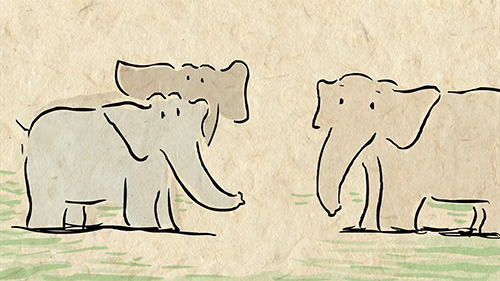
1. Elephants know every member of their herd and are able to recognize up to 30 companions by sight or smell.
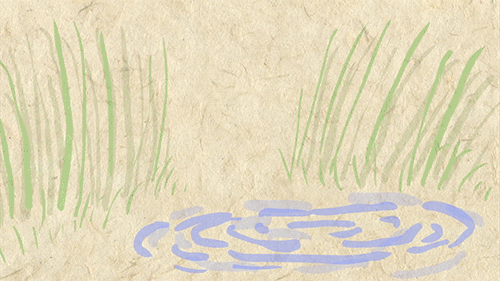
2. They can remember and distinguish particular cues that signal danger and can recall locations long after their last visit.
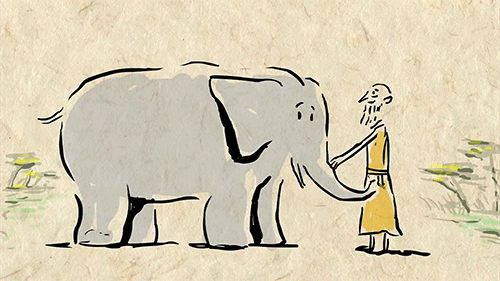
3. An elephant’s memory is not limited to its herd, nor is it limited to its species. In one instance, two circus elephants that performed together rejoiced when crossing paths 23 years later. Elephants have also recognized humans that they once bonded with after decades apart. 4.
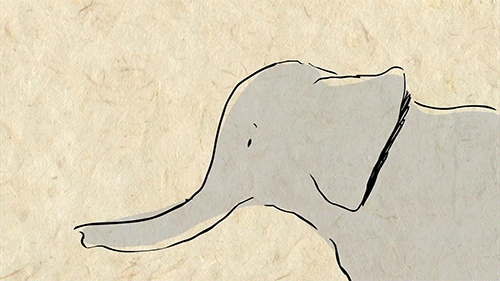
4. The elephant boasts the largest brain of any land mammal as well as an impressive encephalization quotient (the size of the animal’s brain relative to its body size). The elephant’s EQ is nearly as high as a chimpanzee’s.
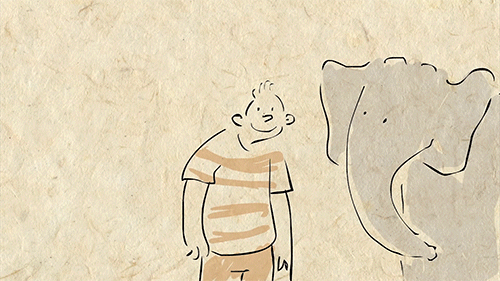
5. The elephant brain is remarkably similar to the human brain, with as many neurons and synapses, as well as a highly developed hippocampus and cerebral cortex.
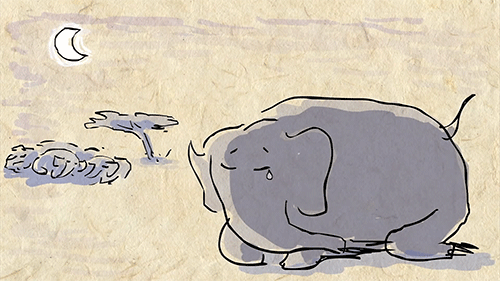
6. Elephants are one of the few non-human animals to suffer from post-traumatic stress disorder.

7. Elephants are creative problem solvers.
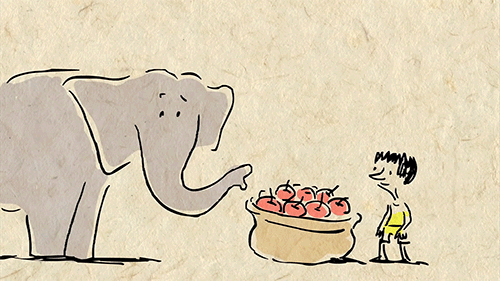
8. Don’t try to outsmart an elephant! They have an understanding of basic arithmetic and can even keep track of relative quantities.
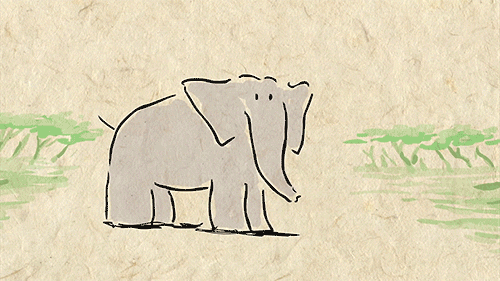
9. Elephants communicate using everything from body signals to infrared rumbles that can be heard from kilometers away. Their understanding of syntax suggests that they have their own language and grammar.
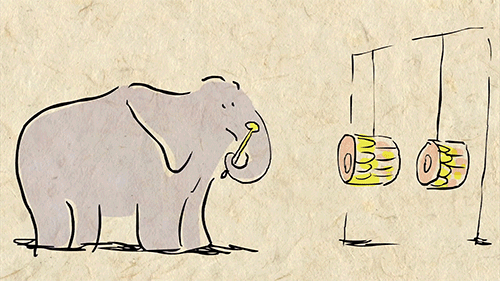
10. Elephants can recognize 12 distinct tones of music and recreate melodies.

11. Elephants are the only non-human animals to mourn their dead, performing burial rituals and returning to visit graves.
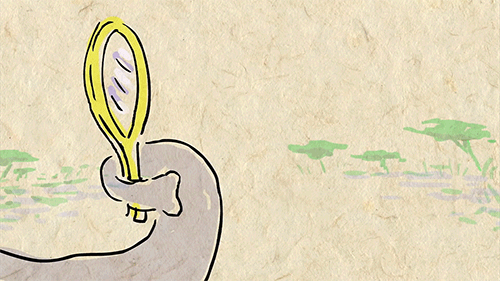
12. Elephants are one of the few species who can recognize themselves in the mirror.
Given what we now know about elephants, and what they continue to teach us about animal intelligence, it is more important than ever to make sure that these magnificent creatures do not vanish.
Check out some more fun elephant facts here and be sure to watch the TED-Ed Lesson Why elephants never forget - Alex Gendler
Animation by the ever-talented Avi Ofer


Plantigrade vs. Digitigrade Carnivores - the Polar Bear and the African Lion
The foot structure of many animals plays a critical role in their locomotion and environmental niche, and in carnivores, the clear distinction between plantigrade (walking with the podials and metatarsals both flat on the ground) and digitigrade (walking on the toes, with the heel and wrist permanently raised) animals is most evident.
In plantigrade beasts - which include humans, many rodents, bears, racoons, and opossums - the larger surface area that the many bones provide can act as both a stabilizer and a very effective bearer of great weights. In fact, the big ol’ flighted dinosaurs were plantigrade. At the same time, so were the first (and relatively small) mammals, since both of them needed lots of stability in their feet. The weight-bearing ability and stable platform comes at the cost of speed, as the energy and requirements for movement of so many bones and muscles is much greater than digitigrade feet or unguligrade feet.
Digitigrade animals walk on only their toes, leaving their wrists and ankles permanently raised. This affords more speed, much more silent movement. Cats, birds, and dogs are digitigrade. Digitigrade feet evolved long after plantigrade feet, to fit the niche of mid-sized carnivores. However, they cannot effectively sustain large loads, which is why you cannot use a lion as a pack mule. Well, among other reasons. Really, you just don’t want to try using any mid-sized (or large, in the lion’s case) carnivore as a pack mule.
On the Anatomy of Vertebrates. Richard Owen, 1866.

Beautiful Blaschka glass model of a Glaucus sea slug.
These amazing animals can give a painful sting if handled. This is because they feed on colonial cnidarians such as Portuguese man o’ war and store the venomous nematocysts of their prey for self-protection.
Really really love the additions to this—they're all very correct lol.
Most prey animals, especially birds, have a notable field of binocular vision. Binocular vision offers both enhanced vision quality and depth perception, which is why most predators have a larger field of binocular vision than prey animals. Predators need to know exactly where their prey is in relation to them and need to be able to accurately assess the state of the prey which requires depth perception and detailed sight. Prey animals need a large range of monocular vision to scan for movement and a small range of binocular vision to better assess the possible threat once it's detected.

One of the coolest things to remember is that because prey animals have eyes on the side of their head, they are looking at you when they're in profile, not facing you! Hot tip for artists and animal lovers!
Are colour-changing octopuses really colourblind?
Cephalopods, including octopuses and squid, have some of the most incredible colour-changing abilities in nature.
They can almost instantly blend in with their surroundings to evade predators or lay in wait, and put on colourful displays to attract mates or dazzle potential prey.
This is impressive enough on its own, but becomes even more amazing when you discover these creatures are in fact colourblind – they only have one type of light receptor in their eyes, meaning they can only see in black and white.
So how do they know what colours to change to at all?
This has puzzled biologists for decades but a father/son team of scientists from the University of California, Berkeley, and Harvard University think the unusual shape of their pupils holds the key, and they can see colour after all.
Cephalopods have wide U-shaped or dumbbell-shaped pupils, which allow light into the lens from many directions.

When light enters the pupils in human eyes it gets focused on one spot, cutting down on blur from the light being split into its constituent colours.
The scientists believe cephalopod eyes work the opposite way – the wide pupils split the light up and then individual colours can be focused on the retina by changing the depth of the eyeball and moving the pupil around.
The price for this is blurry vision, but it does mean they could make out colours in a unique way to any other animals.
Processing colour this way is more computationally intensive than other types of colour vision and likely requires a lot of brainpower, which might explain in part why cephalopods are the most intelligent invertebrates on Earth.

Read the paper
Images: Roy Caldwell, Klaus Stiefel, Alexander Stubbs

One of the coolest things to remember is that because prey animals have eyes on the side of their head, they can still see in front of them but they are focused on something when in profile!